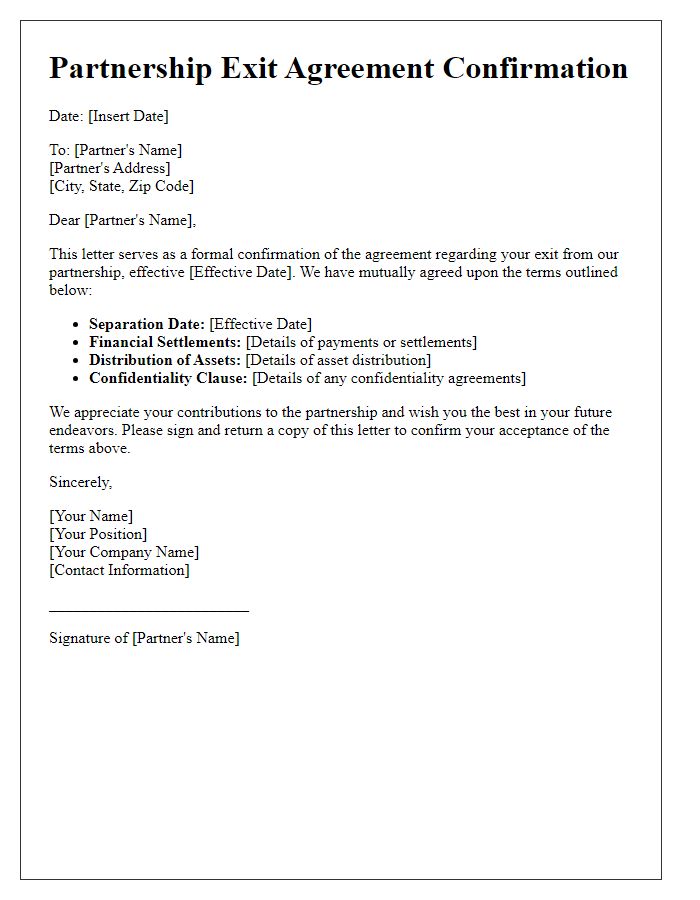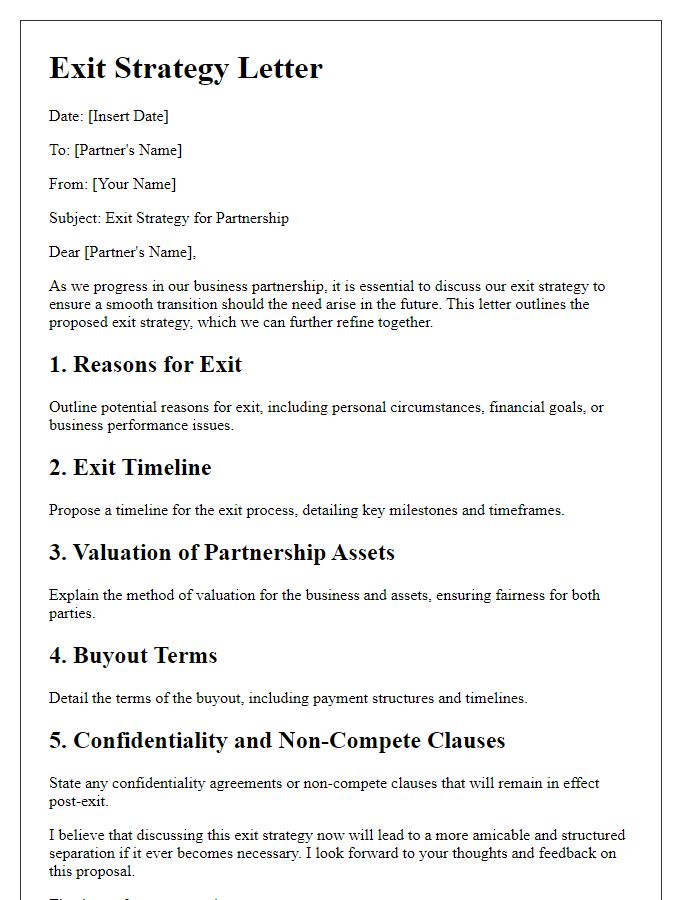If you're considering exiting a partnership and need a structured approach to ensure everything is covered, you're in the right place. Crafting a partnership exit agreement can feel daunting, but it's a crucial step in safeguarding your interests and maintaining good relationships. In this article, we'll guide you through the essential components of an effective exit agreement and share helpful tips to make the process smoother. Ready to navigate this important transition? Let's dive in!

Parties Involved and Agreement Background
A partnership exit agreement formalizes the terms and conditions surrounding the withdrawal of a partner from a business partnership. Primary parties involved include the exiting partner (individual or entity) and the remaining partners, who collectively manage the business operations. Key details of the partnership agreement may reference specific roles, investment contributions, and profit-sharing ratios as established in the original partnership contract. Important considerations include the evaluation of the exiting partner's share value, any outstanding debts or obligations, and the timeline for the exit process. Locations of business operations, such as the registered office address and any branch offices, may also be noted for clarity in the transition. Legal counsel is often recommended to ensure compliance with local regulations and proper documentation of the exit terms.
Exit Terms and Financial Settlements
A partnership exit agreement outlines the exit terms and financial settlements involved when a partner decides to leave. The agreement typically includes the final distribution of assets based on the partnership's valuation (determined through an independent appraisal, if necessary). Financial settlements address the settlement of outstanding debts, tax liabilities, and the division of profits or losses accrued during the partnership period (from inception date, e.g., January 1, 2020, to exit date, e.g., December 31, 2023). Additionally, the agreement may stipulate the continuation of non-compete clauses and confidentiality agreements to protect the interests of remaining partners, along with timelines for the execution of payments and transfer of ownership stakes in company assets, such as tangible property and intellectual property rights.
Confidentiality and Non-Disparagement Clauses
Confidentiality and Non-Disparagement Clauses are crucial in a partnership exit agreement, safeguarding sensitive information and promoting amicable separation between partners. Confidentiality clauses protect proprietary information, trade secrets, and personal data from exposure to outside parties, emphasizing eternal obligation even after the exit, often extending for a specified duration such as five years. Non-disparagement clauses aim to prevent partners from making negative statements about one another post-separation, which can include oral, written, or social media commentary, preserving reputational integrity and fostering a smoother transition in both personal and professional avenues. Such provisions contribute to an overall peaceful disengagement strategy and bolster the stability of remaining business relationships.
Intellectual Property and Ownership Rights
The exit agreement delineates the terms governing the dissolution of the partnership concerning intellectual property rights. The agreement specifies the distribution of ownership rights for developed intellectual property, including patents, trademarks, and copyrights, previously created during the partnership's tenure. For instance, if a software product was jointly developed, both partners need to clarify who retains exclusive rights to that product post-exit, including commercial usage aspects and derivative works. The document also outlines obligations regarding the confidentiality of sensitive information shared during the partnership and stipulates processes for protecting any remaining intellectual property against unauthorized use. Moreover, it establishes a timeline for the transfer of rights and any potential financial settlements related to past collaborative projects, ensuring both parties understand their responsibilities and entitlements moving forward.
Future Relationship and Dispute Resolution
Future relationship dynamics between exiting partners in a business partnership should focus on maintaining professionalism and cordial interactions. Clearly defined communication channels can aid in addressing potential issues, while a structured dispute resolution process (like mediation or arbitration) should be established to handle disagreements. Documented agreements will provide clarity, reducing misunderstandings and fostering a cooperative spirit. Regular follow-ups and revisiting terms of separation may further ensure that both parties remain aligned moving forward, minimizing potential conflicts in future collaborative endeavors.













Comments